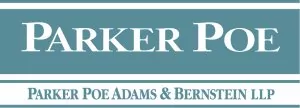The proxy rules require that public companies submit a nonbinding proposal to their shareholders every six years regarding how often they should hold say-on-pay votes, known as "say-on-frequency." Most companies held their first say-on-frequency vote in 2011 and will be including another vote in their 2017 proxy statements. ("Smaller reporting companies" were not required to hold their first say-on-frequency vote until 2013, meaning that they won't have to do it again until 2019, and there are special rules for "emerging growth companies.") Shareholders may choose to vote on executive compensation every year, every two years or every three years, or they may choose to abstain.
Though the vote is nonbinding, the charter of most compensation committees requires them to consider the outcome of the shareholder vote when deciding how best to proceed. Indeed, companies must amend their initial post-meeting Item 5.07 Form 8-K (which reports voting results) no later than 150 calendar days after the end of the shareholder meeting at which the vote was taken in order to "disclose the company's decision in light of such vote as to how frequently the company will include a shareholder vote on the compensation of executives in its proxy materials...."
Back in 2011 when these rules were still new, more than a few companies failed to make the necessary Form 8-K disclosures. While this may not sound like a big deal, in fact it is. A missed Form 8-K filing can render a company ineligible to use Form S-3 during the 12 months following the date that the Form 8-K should have been filed. For companies planning to raise capital in the public markets, that could be a major problem.
A practical way to be sure this filing doesn't fall through the cracks is to include the required disclosure in the initial post-meeting Item 5.07 Form 8-K (filed within four business days after the meeting), rather than waiting until after consideration at a subsequent compensation committee meeting. Because the overwhelming majority of companies will be recommending annual consideration of executive compensation and because most institutional shareholders and proxy advisory firms prefer annual frequency, it is safe to assume that shareholders will strongly support the board's recommendation.
If that is your situation, consider having the board discuss in advance of the annual meeting how it will respond to the shareholders' anticipated approval of its recommendation. It will then be simple to include the necessary disclosure in the initial post-meeting Form 8-K. Doing so removes the risk of inadvertent oversight and eliminates the annoyance/cost of a subsequent Form 8-K filing.
Of course, if the shareholders vote in favor of a different frequency from that recommended by the board or if shareholder support for the board's recommendation is less than overwhelming (for example, less than 70% of the shares voted), then the compensation committee will want to take sufficient time after the annual meeting to thoroughly consider the implications of the shareholder vote and reach an informed decision regarding how best to proceed. In those cases, it also would be prudent to enlist the advice of a compensation consultant or other professionals, and a follow-up Form 8-K may be unavoidable.
This Client Alert is intended to inform readers of recent developments in the field of corporate law. It should not be considered as providing conclusive answers to specific legal problems.

